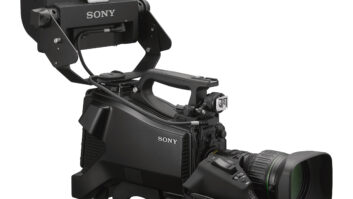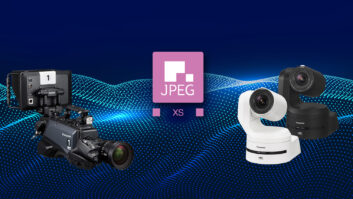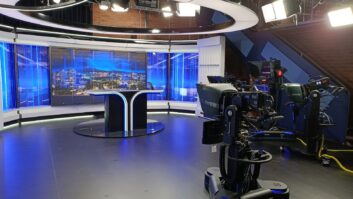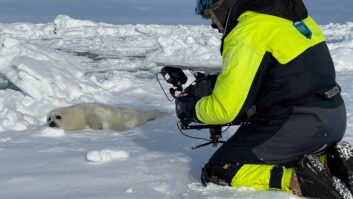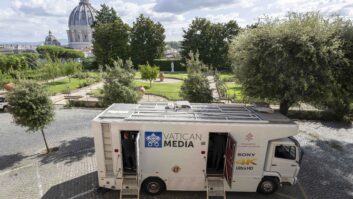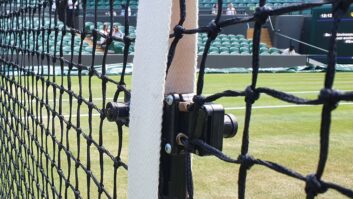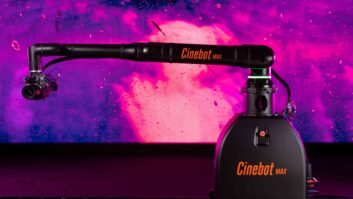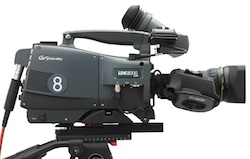
Mediatec + RaceTech join Elite
Mediatec, Scandinavia’s leading outside broadcast company, has bought 22 Grass Valley LDK 8000 Elite high-definition cameras, bringing the total for its fleet to almost 100. This order follows a previous order for eight LDK 8000 Elite cameras and two Kayak production switchers for two new OB trucks last September.
Mediatec now has 30 trucks across the region and in its other European centres. “Our business continues to expand, and we quickly needed more cameras,” explained Mats Berggren, Mediatec’s sales director. “There are cheaper cameras on the market but we were looking for guaranteed reliability, quality, and performance—and that’s what the LDK 8000 Elite provides. It is very popular with our clients and our operators for one simple reason: it produces great pictures every time, and that alone makes it a far superior product than those with a lower price tag.”
The new order includes HD-fibre transmission capable of delivering full 1080p50/60 from the base station. The order, which included lenses, tripods, and heads, was placed in late December, and delivery has just been completed.
Racing cert
Grass Valley has also sold 22 cameras to RaceTech, the UK horseracing specialist. The LDK 4000 Elite cameras. plus Kayak 1.5 M/E HD switchers, will be used by RaceTech crews on board three new HD OB vehicles to produce live and tape-delayed racing programming for Racing UK.
“We have used Grass Valley cameras for the last eight years, so we’re very comfortable with them,” said Mick Both, Director of Engineering and Technical Operations for RaceTech. “We considered all the cameras available on the market, and Grass Valley offered us the best performance and value. We also like the customer support we have received in the past and know that it will continue going forward.”
RaceTech shoots more than 1,000 race meetings in the UK each year. From a single truck, it supports several broadcasters, such as Racing UK’s direct-to-home satellite channel and Turf TV, its service to off-course betting shops. The trucks will also feed the large screens around the course and will be used for ISO recording and playback of all cameras when required as well as providing feeds for national broadcasters Channel 4 and the BBC.
The LDK 4000 Elite is a single-format HD production camera available as either a 720p or 1080i camera head – in this case 1080/50i.
www.grassvalley.com
www.mediatecgroup.com
www.racetech.co.uk
Panasonic AG-AF101 in first broadcast production
A recent production for Al Jazeera is the first to use Panasonic’s AG-AF101 large-sensor camera for broadcast work. It was used for a documentary set in the Great Lakes region of Africa, in the Democratic Republic of Congo, about how women raped and abused during the conflict are rebuilding their lives.
The production required a robust, agile camera that could capture the beauty of the environment, and the AF101 was chosen because of its light weight, large sensor size and solid-state storage, according to Fiona Lloyd-Davies of Studio 9 Films.
“With no tape mechanism and no moving parts, the camera worked faultlessly in all conditions, delivering excellent results,” said the award-winning producer/director. “This is a beautiful part of the world and I wanted a camera that could do it justice. Not only did the 101 bring out the vivid colours of the people and their environment, but its four thirds chip allowed me to adjust the depth of field to great effect.”
One aspect of the camera that did not comply with Al Jazeera’s technical requirements was its native AVCHD recording format, so hire company VMI equipped it with a Convergent Design nanoFlash recorder, which can record MXF or QuickTime files to CompactFlash cards. The nanoFlash was mounted to the camera’s HD-SDI connector, and the resulting 50Mbps broadcast-compliant files were downloaded daily onto two separate rugged drives.
The camera simultaneously recorded AVCHD onto SD cards. This gave the security of a high resolution back-up and ensured that the nanoFlash was in sync with the camera, being set up to record when the timecode changed on the HD-SDI output. When the camera recorded, Lloyd-Davies could be confident that the nanoFlash was recording.
The nanoFlash was powered by the main Anton/Bauer camera battery pack rather than a discreet power supply to ensure that she could not start shooting only to discover later that the nanoFlash had run out of power.
“This is a new camcorder with a third party recording device. With limited technical support available in Eastern Congo, we needed to know that it would be fool proof. VMI carried out full testing before we hired the unit and gave us an excellent grounding in operating the equipment and getting the workflow right,” she said.
Lloyd-Davies will be returning to the Congo for a second shoot in May, together with an AF101.
www.studio9films.co.uk
www.panasonic-broadcast.com
Camera Corps’ 3D/2D remote camera control
The new Camera Corps CC-3D Universal RCP will allow six cameras of different makes and models to be comprehensively remote controlled from a single panel.
“The broadcast industry is experiencing a surge in demand for efficient stereoscopic production equipment to meet the needs of new 3D television channels,” said Jim Daniels, Camera Corps’ technical director. “The CC-3D Universal RCP is equally suitable for use with 3D and 2D systems. Up to two stereoscopic rigs can be controlled on a paired-camera basis to maintain predetermined adjustment offsets between left and right cameras, or as individual cameras if preferred. The panel is intuitive to operate, allowing fast and easy operation during outside broadcasts as well as for live stage or studio events.”
The panel, which is due to launch at NAB, has a top row of six channel-selection buttons, assignable to each camera. Fixed-operation buttons are positioned on the next row, each with a specific function and always active regardless of which menu is selected. Below this are two selector buttons that step through various menu screens. Four function-adjustment buttons below the menu screen perform actions on the displayed parameters.
A full set of engineering presets is accessible and, once set, can be password-protected to prevent unauthorised changes. Cue/tally information for all six channels can be accommodated, the colour of the channel select buttons changing from green to red when a cue/tally is active. Cue/tally information is transmitted to any pan/tilt/zoom/focus joystick controllers being used and can be forwarded to the camera. Remote channel selection and remote monitor switching can also be performed.
The Camera Corps data system uses modems to convert the digital control signals into audio style tone signals before transmission. This has advantages over conventional high bit-rate digital data control, including practically unlimited distance as well as easy transmission over RF links and telephone lines. Standard audio cables or CAT5 data cable can be used for control data transmission. The data is simply paralleled using XLR3 splitters for transmission to multiple cameras/heads.
The CC-3D Universal RCP can be operated standalone or fully integrated with other Camera Corps remote control equipment such as the PTZF pan/tilt/zoom/focus switcher, joystick controllers, Q-Ball and HD Mini Zoom cameras and Multi-Rate Re-Clocker. Available in rack mounting or 138x325x75 millimetre 2.1kg desktop case versions, the panel will operate from 9v to 18v DC power and consumes approximately 1.5W.
Sony 4K prototype expected at NAB
Sony is planning to show a prototype 4K+ camera at NAB. It will use an 8K CMOS Super35mm-sized sensor (8768×2324 pixels), subsampled to 4K output. It is reported to have a wider colour space than rival cameras, with 16-bit RAW output, at 16:8:8, recording to Sony’s new 5Gbps SRMemory card format, with an hour of video taking up about 1TB at 24p.
It should shoot at 1-72 frames per second in standard mode, but will go up to 120fps in a high frame rate mode.

